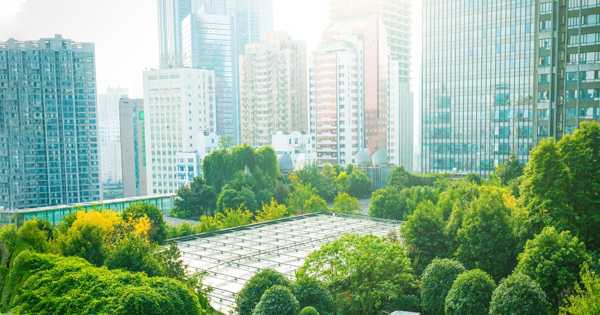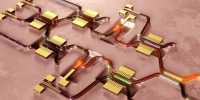New technology has the potential to improve people’s lives while saving billions of dollars in cities around the world. The Stanford Natural Capital Project’s free, open-source software generates maps that depict the connections between nature and human well-being. The software can be used by city planners and developers to visualize where investments in nature, such as parks and marshlands, can maximize benefits to people, such as flood protection and improved health.
“This software assists in the design of cities that are better for both people and nature,” explained Anne Guerry, Chief Strategy Officer and Lead Scientist at the Natural Capital Project. “The trees on your street can lower temperatures, allowing your apartment to be cooler on hot summer days. At the same time, they absorb the carbon emissions that cause climate change, provide a free, accessible place to stay healthy through physical activity, and simply make your city a more pleasant place to live.”
Experts predict that by 2050, more than 70% of the world’s population will live in cities; in the United States, more than 80% already do. As the world’s population becomes more urban, developers and city planners are becoming more interested in green infrastructure, such as tree-lined paths and community gardens, which provide a variety of benefits to people. However, planners cannot strategically invest in nature unless they have detailed information about where a path might encourage the most people to exercise or how a community garden might buffer a neighborhood from flood risk while also helping people recharge mentally.
By 2050, more than 70% of the world’s population will live in cities. Researchers have developed software that shows city planners where to invest in nature to improve people’s lives and save billions of dollars.
“With this software, we’re answering three critical questions: where in a city is nature providing what benefits to people, how much of each benefit is it providing, and who is receiving those benefits?” At the time of research, Perrine Hamel was the lead author on a new paper about the software published in Urban Sustainability and Livable Cities Program Lead at the Stanford Natural Capital Project.
The software, known as Urban InVEST, is the first of its kind for cities, allowing the combination of environmental data, such as temperature patterns, with social demographics and economic data, such as income levels. Users can enter datasets from their city into the software or access a variety of open global data sources, ranging from NASA satellites to local weather stations. The new software complements the Natural Capital Project’s existing InVEST software suite, a collection of tools designed for experts to map and model the benefits provided by nature to people.
To put Urban InVEST to the test, the team took it to Paris, France; Lausanne, Switzerland; Shenzhen and Guangzhou, China; and several cities in the United States, including San Francisco and Minneapolis. In many cases, they collaborated with local partners to understand priority issues; for example, in Paris, municipal candidates were campaigning on the importance of urban greenery, while in Minneapolis, planners were deciding how to repurpose underutilized golf course land.

Running the numbers
The researchers used Urban InVEST in Shenzhen, China, to calculate how natural infrastructure such as parks, grassland, and forests would reduce damages in the event of a severe, once-in-a-hundred-years storm. They discovered that the city’s natural environment could save $25 billion in damages by absorbing rain and diverting floodwaters. They also demonstrated that natural infrastructure, such as trees and parks, reduced the daily air temperature in Shenzhen by 5.4 degrees Fahrenheit (3 degrees Celsius) during hot summer days, providing the city with $71,000 in benefits per day.
Targeting inequities
Nature is frequently unevenly distributed across cities, putting low-income people at a disadvantage. Data show that lower-income and marginalized communities often have less access to nature in cities, preventing them from reaping the benefits that nature provides to wealthier populations, such as improved mental and physical health.
In Paris, the researchers examined neighborhoods without access to natural areas and compared income and economic data to determine who benefited from nature. The software-assisted in determining where investments in more green space, such as parks and bike paths, would be most effective in improving health and well-being in an equitable manner.
Planning for a greener future
Golf revenue is declining in the Minneapolis-St. Paul, Minnesota area. The economic downturn has created an appealing opportunity for private golf courses to sell their land for development. Should developers, on the other hand, create a new park or a new neighborhood? In comparison to golf courses, new parks could increase urban cooling, keep river waters clean, support bee pollinators, and sustain dwindling pockets of biodiversity, according to Urban InVEST. New residential development, on the other hand, would raise temperatures, pollute freshwater, and reduce bee and other biodiversity habitat.
Healthy city ecosystems
Urban InVEST is already being used outside of the lab; it recently assisted in the evaluation of how nature might help store carbon and lower temperatures in 775 European cities.
“Cities, more than any other ecosystem, are created by humans. Why not be more deliberate in how we design the places where most of us spend the majority of our time? “Guerry, who is also a co-author on the paper, agreed. “City governments can use Urban InVEST to bring all of nature’s benefits to residents and visitors. They have the potential to address inequities and build more resilient cities, resulting in better long-term outcomes for people and nature.”















